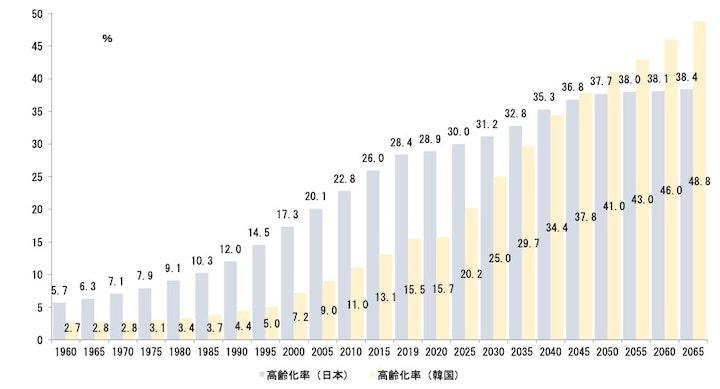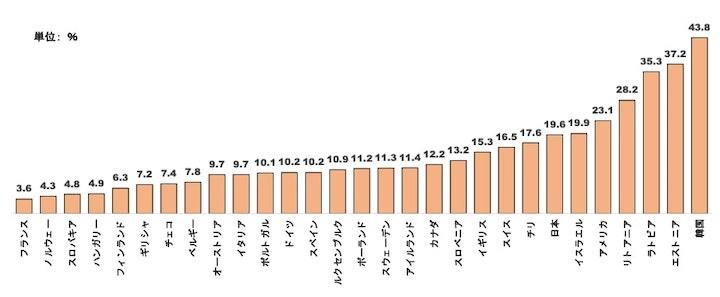
Note 1) 1960-2019: actual value, 2020-2065: estimated value
Note 2) Japan: Medium birth, Medium death, South Korea: Birth rate as of 2016, Medium expected life expectancy, Medium international net migration
Source) Japan: National Institute of Population and Social Security Research (2017) “Future Estimated Population of Japan (2017 Estimate)”, South Korea: Statistics Korea Homepage “Future Population Estimate” (Material updated: March 28, 2019) ) Created by the author

Note 1) Relative poverty rate: In the OECD, household members whose equivalent disposable income (calculated by dividing the disposable income of a household by the square root of the number of households) is less than half of the median of the total population are defined as relative poor. doing.
Note 2) Japan data is for 2015
Source) OECD Data, Poverty rate.
South Korea: 2019 old-age pension receipt rate, only 53.2%: elderly poverty rate is an issue
South Korea’s aging rate:
The aging rate in South Korea
Now it’s far below Japan,
The speed of declining birthrate and aging population is fast,
It will surpass Japan in 2045.
There is an urgent need to expand public pensions for the elderly, who have relied on their children and relatives.
Rapid progress of aging:
With the rapid progress of the declining birthrate and aging population in South Korea, the Korean government’s spending on social security is continuously increasing.
2065 aging rate forecast:
At 15.5% as of 2019
Although well below Japan’s 28.4%
The speed of declining birthrate and aging population is fast,
It is expected to exceed Japan’s aging rate in 2045.
2065 aging rate forecast:
If the birthrate is declining and the population continues to age, the aging rate in South Korea in 2065 will be 48.8%, which is much higher than Japan’s 38.4%.
Relative poverty rate for the elderly aged 65 and over:
In 2017, South Korea’s relative poverty rate for the elderly aged 65 and over (the percentage of people whose income is below half the median) was 43.8%.
The highest of the OECD member countries for which 2017 data is available.
Korea’s basic pension system:
In 2014, the Korean government introduced a basic pension system for the elderly aged 65 and over with the lowest income of 70%.
After that, the amount of benefits was raised from a maximum of 100,000 won to 300,000 won.
Despite the income improvement policy, the poverty rate of the elderly has not improved yet.
As of 2019:
The old-age pension receipt rate of the public pension is about 53.2%.
It turns out that many older people still do not benefit from public pensions.
Newsweek Japanese version official site